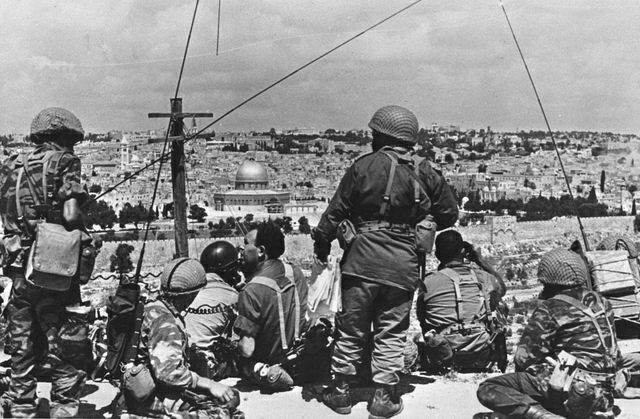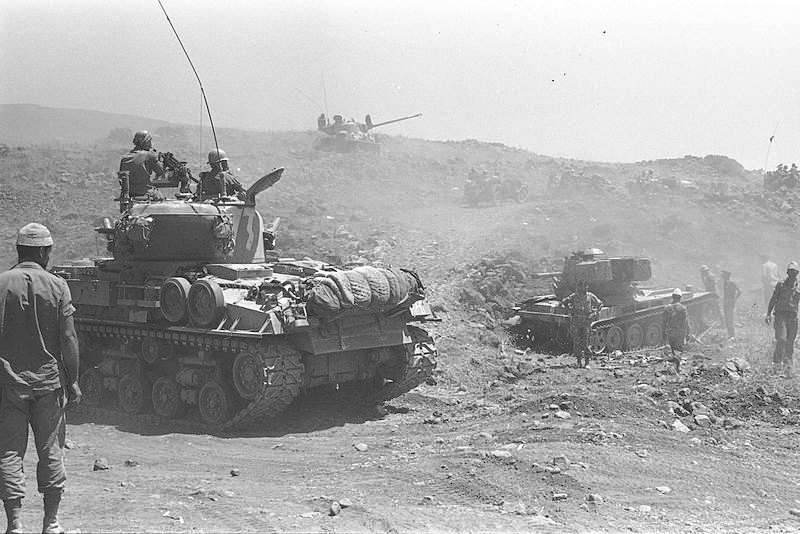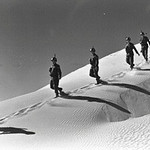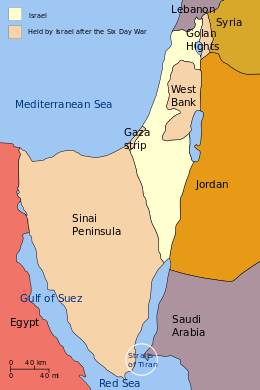Fact - Jews have been living in Israel continuously for over 3,000 years
The Jewish people have maintained a well-documented, unbroken presence in Israel for well over 3,000 years, beginning in the 2nd millennium B.C.E., continuing under a long series of Jewish kingdoms and foreign rulers, and through to the modern State of Israel. Conquerors, diplomats, pilgrims and visitors throughout the millennia have left an abundance of references to the Jewish communities living there. Israel is filled with archaeological and historical sites, many of which testify to Jewish life over the centuries.
Even the Muslim Qur’an refers to the Jewish people as the “Children of Israel”.
Even the Muslim Qur’an refers to the Jewish people as the “Children of Israel”.
The historical Jewish right to a homeland in Palestine was first recognized by the modern international community (and by Great Britain, which had gained control of the region from the Ottoman Empire during World War I) in the Balfour Declaration of 1917 and the League of Nations Mandate of 1922. Both of these documents preceded the Nazi Holocaust by decades, thereby disproving more recent (yet widespread) claims according to which Israel's creation was justified not by thousands of years of Jewish history, but rather only by the Holocaust.
Israel has also always been central to the lives of religious Jews living outside of it, in the Jewish diaspora. Although the territories of the former Jewish kingdoms were renamed “Palaestina” by their Roman conquerors with the specific intention of erasing their Jewish significance, for nearly 2000 years Jews living in exile prayed 3 times a day, facing Jerusalem, in the hopes that they would one day return.
Despite all this, Palestinian leaders, university professors, religious figures,archaeologists, historians, school textbooks, music videos, and even the Palestinian National Charter, continually spread the fabrication that Jews have no historical connection to the land, and that any claimed history was invented in order to justify the creation of Israel.
“Israel is the very embodiment of Jewish continuity: It is the only nation on earth that inhabits the same land, bears the same name, speaks the same language, and worships the same God that it did 3,000 years ago. You dig the soil and you find pottery from Davidic times, coins from Bar Kokhba, and 2,000-year-old scrolls written in a script remarkably like the one that today advertises ice cream at the corner candy store.” - by Charles Krauthammer
Despite all this, Palestinian leaders, university professors, religious figures,archaeologists, historians, school textbooks, music videos, and even the Palestinian National Charter, continually spread the fabrication that Jews have no historical connection to the land, and that any claimed history was invented in order to justify the creation of Israel.
“Israel is the very embodiment of Jewish continuity: It is the only nation on earth that inhabits the same land, bears the same name, speaks the same language, and worships the same God that it did 3,000 years ago. You dig the soil and you find pottery from Davidic times, coins from Bar Kokhba, and 2,000-year-old scrolls written in a script remarkably like the one that today advertises ice cream at the corner candy store.” - by Charles Krauthammer
Build-Up to War
Egyptian Troop Movements into Sinai (May 15)
On May 14, 1967, Egypt, citing its defence pact with Syria, began to move forces to the Sinai peninsula. Many of the troops passed through Cairo on their way east. A day later, a general state of emergency was declared in Egypt. Text of the Egyptian Battle Order No. 1, issued by Field Marshal Abd al-Hakim Amer, 14 May 196 7.
Withdrawal of the UN Emergency Force (May 20)
Egypt Closes the Gulf of Aqaba (May 22)
On May 18, 1967, Secretary-General U Thant agreed to the withdrawal of the United Nations Emergency Force from Sinai and the Gaza Strip. On 23 May, as he was flying to Cairo, he heard that Egypt had re-imposed the naval blockade on the Straits of Tiran
Ever since the beginning of the crisis, the Soviet Union had publicly supported the actions of Syria and Egypt. Soviet press reports put the responsibility for the crisis on Israel. Official statements blamed Israel for the tension. On 26 May, Premier Kosygin addressed a Note to Prime Minister Eshkol. He ignored the concentration of Egyptian troops in Sinai and the reimposition of the blockade on the Straits of Tiran, and called on Israel to prevent military confrontation. In his reply, Mr Eshkol called on the Soviet Union to use its influence to achieve a lasting peace in the Middle East based on principles espoused by the Soviet Union over the years.
Nasser's Speech to The Egyptian National Assembly
Before The Outbreak of The Six-Day War (May 29, 1967)
The absence of any significant international reaction to the reimposition of the blockade on the Gulf of Aqaba only emboldened Nasser. In a speech to Arab Trade Unionists on 26 May, he declared his real objective: "The battle will be a general one and our basic objective will be to destroy Israel.
In the early hours of 5 June 1967, hostilities broke out. Within three hours the Egyptian air force was virtually destroyed. There was also fighting on the ground. Prime Minister Eshkol broadcast the following message to the people of Israel:
On the morning of 5 June 1967, Prime Minister Eshkol transmitted through the Chief of Staff of UNTSO a message to King Hussein asking Jordan to refrain from hostilities. Text:
The video below clearly shows why Israel can not return to the pre 1967 borders.
Israel's Critical Security Needs for a Viable Peace
Israel, in any future agreement with the Palestinians, has a critical need for defensible borders. This video outlines the threats to Israel from terrorist rockets, ballistic missiles, and conventional ground and air threats from the east. As you will see returning to the pre 1967 borders is just NOT an option.
 |
| A view of Tel Aviv from the West Bank |
For large images click on each link.

Israel’s Geographic and Topographic Vulnerabilities Opposite a Prospective Palestinian State

Israel's Defense Line: The Jordan Rift Valley with the Steep Eastern Slopes of the West Bank Mountain Ridge
 Strategic Terrain Dominating Jerusalem: The Vulnerability of Jerusalem and the Jerusalem-Tel Aviv Highway
Strategic Terrain Dominating Jerusalem: The Vulnerability of Jerusalem and the Jerusalem-Tel Aviv Highway
The Threat of Palestinian Rocket Fire on Israeli Population Centers and Infrastructure
 Israel's Airspace Vulnerabilities: The Limited Time for Interdicting Hostile Aircraft
Israel's Airspace Vulnerabilities: The Limited Time for Interdicting Hostile Aircraft |
| Israeli Gunboat passing through the Straits of Tiran near Sharm el Shaikh. |
 |
| A column of armoured half-tracks manned by reservists in the South. |
 |
| Tanks in the Negev Desert |
June 5th 1967 - IDF Brakes through Lion Gate
 |
| Israeli troops in front of the Lion Gate |
 |
| Israeli armored car at the Lion Gate |
 |
| Troops arriving at Temple Mount |
 |
| Israeli paratroopers hoisting flag in Old City |
Jews across the globe thanked G‑d for the great miracles that happened. An incredible sense of pride and spiritual awakening gripped the Jewish people worldwide.
* *
via:











No comments:
Post a Comment